In part one of this two-part blog series, we went over some of the basics on "fresh" site content and why it's so important for your overall SEO and digital marketing success. Google and other search engines definitely prioritize new, updated content in today's day and age, and there are several specific reasons why optimizing your pages in this way will help boost your rankings and impressions.
At Be Locally, we're here to help. We offer a robust range of SEO and web design services, and fresh content is a key part of our approach to on-site optimization. Here are some of the other major reasons why it's so important.
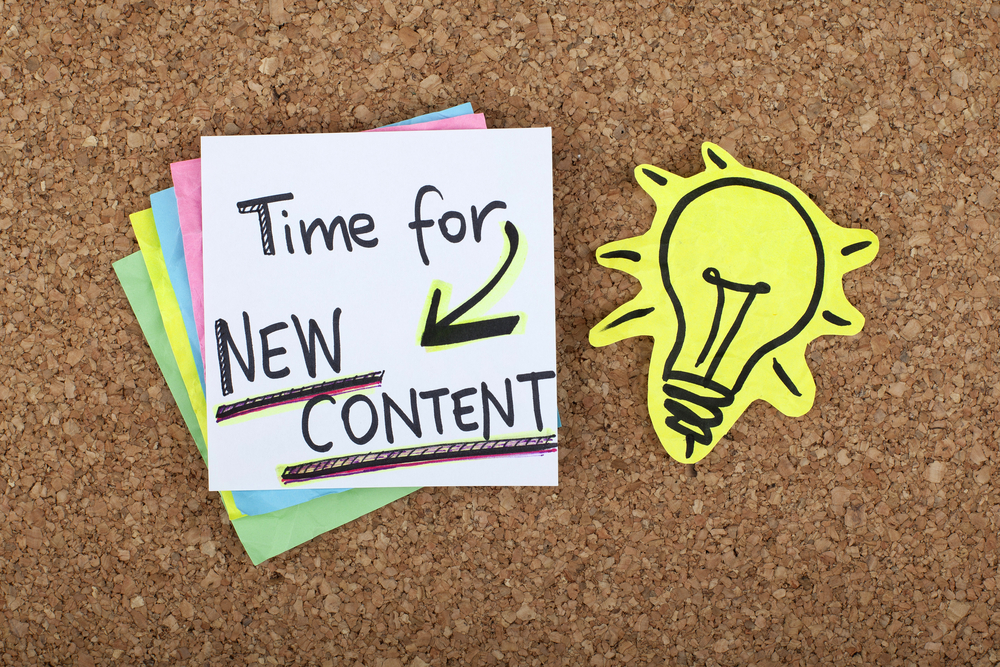
Google is the single largest source of search traffic for most websites, and when it comes to their algorithms for ranking pages and sites, fresh content is at the top of the list. Google's algorithms are regularly updated, so it's important to make sure your site is always up-to-date with new content.
This ensures that your pages will rank higher in Google SERPs, and it will also keep your pages from getting pushed down the rankings by new, fresh content from other sites. The Googlebot that crawls your website will also be more likely to come back more frequently if it can find something new each time.
A key element in SEO today is the concept of "authority" - and content plays a major role in this. Updating your site with fresh content will show Google (and other search engines) that you're an authority on the topic, as well as a reliable source of information for users.
Having more content also allows you to use internal linking and crosslinking to create relationships between different pages and topics, which can further help boost your SEO.
As mentioned above, Google crawls websites looking for new content - if it finds something that's outdated or irrelevant, it will lower your rankings. That's why keeping your pages fresh is so important. It shows Google that your content is still relevant and up-to-date, which will help ensure you don't lose any ground in the rankings.
Finally, having fresh content on a regular basis helps keep users engaged with your site. Updated content means people are more likely to return to your site for new information or updates, which can help increase your traffic and leads.
At Be Locally, we know how important fresh content is for SEO success - that's why it's a cornerstone of our approach to digital marketing. If you're looking to optimize your site for search engines, contact us today and find out how we can help! We look forward to hearing from you.
There are several forms of pages that may be valuable to your SEO and digital marketing efforts, and one important type here are location pages. What are these pages, and what are some of the key elements that should often be included in these pages?
At Be Locally, we're happy to offer a wide range of SEO and digital marketing services, including local SEO and many others. Let's go over what location pages are and why they are often important for your marketing efforts, plus go over some of the key elements you may want to include in your location pages, across this two-part blog series.

If you're unfamiliar with location pages, they are simply pages on your website that focus on a specific geographic location. This can be a city, state, country, or other such area. These pages are important for several reasons.
For one, they help you to target potential customers in specific locations. If someone searches for something like "restaurants near me," your location pages can come up and help to bring them to your business. Additionally, if you have a brick-and-mortar store or other physical locations, these pages can be used to list each individual location, complete with important information like the address, hours of operation, phone number, and more.
Location pages are also beneficial for SEO purposes. They can help you to rank higher in search engine results pages (SERPs), which in turn can lead to more website visitors and potential customers. And, they can be a great way to build up your backlink profile, as you can include links to your location pages on other websites and online directories.
As you're creating location pages, having unique content is extremely valuable. Our next several sections, and on into part two of our series, will go over some of the content and related elements it often pays to include in your pages.
Using Google My Business is one of the simplest ways to get started with local SEO. This is a free platform from Google that allows you to list your business, complete with important information like your hours, address, phone number, and more. Once you've completed your listing, it will appear in SERPs when potential customers search for related terms.
Your pages should also include paragraph content discussing your locations. This is a great opportunity to include important information like your hours of operation, special offerings, and anything else that may be of interest to potential customers. You can also use this space to discuss your company's history, if you have multiple locations, and more.
Another vital element to include on your location page is your hours of operation. This lets potential customers know when they can come and visit you, and can help to avoid any disappointed customers who show up outside of your hours. You'll also want to include your name, address, and phone number (NAP), so that potential customers have all the information they need.
In part two of our series, we'll go over some additional elements to include in location pages for SEO. For more on this, or to learn about any of our SEO, PPC or other online marketing solutions, speak to our team at Be Locally today.
In part one of this two-part blog series, we went over some of the major reasons why long-form content is so valuable in the world of SEO and digital marketing. From its ability to target multiple keywords to the way it makes it easier for Google to crawl and much more, there are several reasons why utilizing long-form content regularly is important for those in the SEO world.
At Be Locally, we're happy to help with a variety of SEO and related themes, from web design and other on-site needs to PPC and many other off-site optimization services. What are some of the other major value-add areas of long-form content, and what are some tips we can offer on how to implement this content well on your site? Here are several basics to keep in mind.
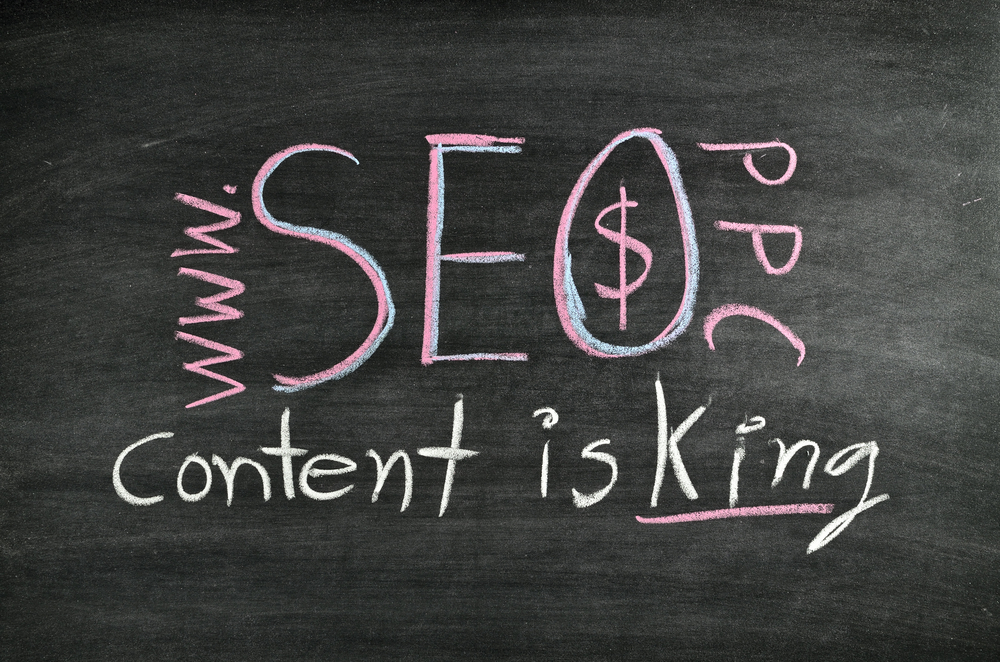
Part of the value of long-form content is the way its length allows you to include multiple angles and topics on a single subject. This can be valuable for both the reader, who gets to see the topic from several different perspectives, and for the writer, who can target multiple keywords with a single piece of content.
It also allows you to go into more depth on a particular subject than you might be able to in a shorter article, giving you more information to work with and a better chance of ranking for multiple keywords.
In addition to providing a great place for content, long-form is also an opportunity to create reference material for your site. By including detailed information, citations, and other valuable resources, you can make your long-form content into a one-stop shop for anyone looking for more information on the topic at hand.
This can not only help with SEO, but also with driving traffic and building authority for your site.
Here are some basic tips we can offer on how to implement long-form content on your business website:
For more on why long-form content is so valuable and how to implement it, or to learn about any of our SEO programs or services, speak to the staff at Be Locally today.
Content has long been one of the single most important elements in any SEO or digital marketing plan, and the last few years have revealed a specific trend within this realm: Long-form content is an extremely valuable approach. From longer blog posts to specific case studies, conference decks and other formats, long-form content is taking on more and more importance among SEO experts and internet marketers everywhere.
At Be Locally, our quality SEO services include meaningful attention to your site's content, and long-form methods have become a bigger and bigger part of our programs recently. Why is this, and what can businesses do to optimize their use of increased long-form content in several areas? This two-part blog series will go over the answers to both these questions.

One of the key benefits of long-form content in the SEO world is the way it allows you to target a greater range of keywords. Consider this: A company might have three or four main services it offers, plus about fifteen or so sub-niches of these services that it provides to different industries and groups. Each of those sub-niches is likely to include its own set of questions and keywords, meaning there are at least thirty more general keyword phrases a company should rank for in order to fully optimize their site.
This, of course, is much more difficult with a shorter article. If you only have 300 words to work with on a page, it's tough to target thirty different keywords that might also be relevant to the same topic. With an additional 200-300 or so words, though, you can target a much greater range of keywords while still including anything that could be pertinent to your business.
In addition, long-form content that's relatively simple will be incredibly easy for Google and other search engine bots to crawl. When Google can understand the context of a given page, it can rank it much more easily, which is always a boon for businesses that want to dominate their search engine results.
Link building is also a huge part of SEO for many companies, and quality long-form content can be a tremendous asset in this area as well. After all, the greater depth and detail you offer on your site, the more likely it is that authoritative websites covering related subjects will want to link back to your information and provide a valuable resource for their own visitors.
Long-form content is also a simple way to target evergreen topics that will always be of interest to your visitors, from SEO strategies to inbound marketing techniques. By offering a greater degree of content on these types of topics you can attract organic traffic year round and make it much easier for search engines to know exactly what your website is all about.
Finally, long-form content is a relatively simple way to update an evergreen page without having to sacrifice its permanent status. For many websites that are constantly producing new content, updating a page with fresh information is simply impractical due to the regularity of their schedule. This means they have to create new pages over and over again for every new piece of information they want to share, but long-form articles mean changes can be made easily without having to go through this process.
For more on why long-form content is becoming a necessity for many SEO efforts today, or to learn about any of our other digital marketing services like PPC, web design and more, speak to the pros at Be Locally today.
While certain elements of search engine optimization (SEO) are relatively simple and straightforward, some others are a bit more complex. There are several "under-the-hood" examples in this category, elements that help drive SEO success despite most people knowing very little (or nothing) about them -- and one great example here is the use of what's known as a crawl budget for your site.
At Be Locally, we're proud to offer a wide range of SEO services, from well-known themes like web design or social media marketing to lesser-known areas like bot crawlers and crawl budgets. What is a crawl budget, how might certain crawl budget issues impact your site, and what can be done about them?

In simple terms, crawl budget refers to the amount of time Google or another search engine spends "crawling" a site, or the amount of time it spends downloading and indexing a particular website. Google has finite resources for this process, and they will use a few factors to determine how your site is prioritized.
As a site owner, there are two pieces of this puzzle to pay attention to: Raising your crawl budget where possible, and getting the most out of your existing crawl budget. Because the former is much tougher than the latter, though, and may involve certain extremely technical themes, the rest of this blog will primarily focus on the latter, which involves several relatively simple concepts.
Here are a few of the problems that may arise on your site with regard to crawl budget:
You have a few solutions available to you if you're dealing with any of the above issues, or others related to crawl budget:
For more on crawl budget and how to work through issues with it, or to learn about any of our technical SEO expertise areas, speak to the staff at Be Locally today.
Within the world of search engine optimization (SEO), on-page content is one of the single most important elements. On-page SEO features everything from meta tags and formatting to keyword optimization and more, helping make your content available to search engines and your audience alike.
At Be Locally, we're happy to help with a wide range of SEO and local SEO services, including on-page optimization for any of your business's pages. There are several types of on-page optimization you might consider for your website depending on your goals, budget and other factors -- but a few of these are most common and popular within the SEO world. Let's go over what on-page SEO optimization is, plus a few specific strategies for it, in this two-part blog series.
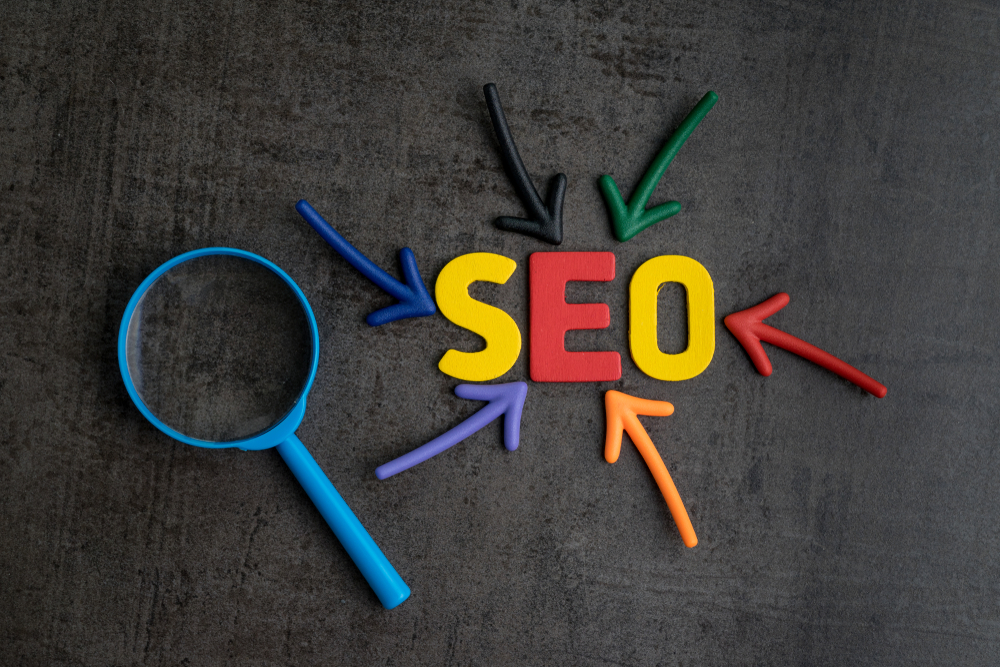
On-page SEO, as we noted above, includes meta tags, content format, keyword optimization and other areas that help make your content available to search engines.
The basic idea behind on-page SEO is simple: The elements your site has (or doesn't have) become a part of how search engines index and rank your content. For example, if a page on your site is very fact-based and offers little in terms of reader interactivity or engagement, you can improve the page's overall reach by making sure all of the facts are present and easy to find. This is what meta tags do, among other things: They help search engines "find" your content.
On-page SEO helps boost your content's reach in two ways: One, it improves the chances that a page's content will be found by Google and Bing; two, it can help your content look more appealing to potential readers (and thus improve how likely they are to stay on your site). This means that in addition to search engines, page-to-page SEO also helps you reap the social benefits of good content.
Our next few sections will go over common tactics for on-page optimization that will bring you fantastic results.
As we just noted, on-page optimization should be tailored to both prospective site visitors and search engine bots. When you're formatting your on-page content, make sure that it's written in a way that is appealing to both humans and web crawlers.
There are several ways to do this, including:
For more on how to optimize your on-page SEO, or to learn about any of our SEO, PPC, social media marketing or other online marketing services, speak to the staff at Be Locally today.
During this difficult period for most of society, one where many lives and jobs have been lost and daily life as we know it is flipped on its head, those who create content may periodically feel like they’re at a loss. It can be difficult to find both motivation and prudent topics to cover during a time like this, especially for those trying to market products in what feels like an emotion-less way.
At Be Locally SEO, meaningful content creation is a big part of our web design and overall SEO services. Themes like empathy and emotion have long been important ones for content creation, and they’ve taken on even greater meaning during recent months – with this in mind, here are some basic tips for how to include empathy, emotion and similar themes in content to connect with readers.

First and foremost, take some time to consider precisely who you’re targeting and writing for with your content. Do your best to try and understand where their head will be at while they’re reading your content – these are real people, after all, and they have emotions just like the rest of us. The more real you can make this for yourself, the better it will come across to readers.
In addition, you can consider numerous basic pieces of information about targeted readers to help you along this path. Think about age ranges, interests, common occupations, skill levels, and various questions or challenges they may have in their life that relate to your products or services in some way. If you can find ways to answer these questions or fill in gaps for them, you’re on the right track.
Once you’ve spent some time determining the questions and needs your readers will have, now it’s time to get to work answering these. You’re looking for ways to help them achieve goals or fill needs.
While doing so, look for ways to personalize and humanize the things you’re writing. Share personal stories or anecdotes that make you relatable to the reader, particularly if you have personal experience with some of their needs. This brings meaning and emotion to what you’re writing, allowing readers to connect with you in special ways.
Finally, for your own good and that of your readers, set goals for pieces of content and content creation periods. Think about where you want to take the audience, for one, but you can also spend time planning out your day of content and performing other basic tasks that will make the process easier for you to approach with empathy and care.
For more on how to infuse empathy and emotion into content creation, or to learn about any of our SEO, PPC or web design services, speak to the staff at Be Locally SEO today.
To get the maximum benefit from your SEO efforts – especially as it concerns content marketing – you have to focus on the needs of your audience.
Digital marketers and SEO specialists spent years (decades, even) focusing their efforts on making Google happy. Today, that focus won’t get you where you want to be. In fact, if you aren’t careful, it could hurt you more than it helps in the search rankings.
As convoluted and meta as it sounds, the way to make Google happy today is to give your audience whatever makes them happy.

Google’s algorithms are geared toward one singular goal: giving Google users what they want when they want it. The better the results any given search can return, the more likely the user is to keep using Google. And if your results are what makes the searcher happy, Google will reward you accordingly. And, by the way, Bing, Yahoo and every other search engine out there share this goal.
So, how does this affect you and your audience? It’s easier to understand when you look at the process through Google’s eyes.
Somewhere among the billions of internet users who conduct Google searches every day are your prospects and customers, i.e., your audience. Once you figure out who those people are, you have to figure out what they want when they do a search. And then you have to give it to them.

This creates engagement and, ideally, drives behavior. The audience gets what it went looking for, which makes Google happy. And, hopefully, you get conversions as a result.
Like Big Brother from Orwell’s 1984, Google sees all. By carefully monitoring what the searcher does with their results, Google can tell if that individual found what they came for.

So, for example, imagine that a homeowner in Salt Lake City is having problems with hard water. Maybe she doesn’t know exactly what the solution is but she’s tired of water spots on her faucets and glassware.
If you have a company in her area that installs water filtration systems and softeners, our homeowner is likely a good prospect for you, because you have a solution to her problem. But, to get here there, you have to engage her, educate her, answer her questions and lead her down the path to purchase.
If she searches on a term like “hard water Salt Lake City,” she could find content from your site that explains what hard water is and the problems it causes. If she clicks the link and spends a few minutes reading your blog, Google records her activity. The more time she spends there, the more the algorithms register that you’ve provided something she wants.
Now, if our hard water-plagued homeowner clicks a link on the page to contact you or to peruse additional content, Google gets even happier. The algorithm remembers, makes note of the engagement and, the next time someone does a similar search, guess whose content will gain traction in the search results?
You may already have a detailed prospect and customer profiles worked out for your business. If not, however, that’s the first step in boosting your content-related SEO. But don’t stop there.
Once you’ve identified your audience – homeowners in Salt Lake City who have hard water problems, in our example – you must identify the type of information they need. You’ll also need to figure out what terms they’re using to search for this information. This means demographic research, keyword research, and a deep dive into the type of topics and information that your audience is searching for.

The way you structure your content should also depend on your audience. In our hard water example, the homeowner looking for solutions likely wants simple, straightforward answers. So, rather than get into the science of water softening or the organic chemistry of hard water, you’ll get much further with a basic explanation of the problem and some clear, logical answers about possible solutions.
For most businesses, the most effective approach to content marketing and SEO is to use the services of an expert. At Be Locally SEO, we conduct the necessary research to determine what type of content your audience is looking for. We use best practices of search engine optimization and content creation to get you in front of your prospects, engage your audience and make Google happy all at the same time. And that helps you grow your business and achieve your marketing goals.
Contact us today to learn more about how we can help you get results with content marketing and SEO.
Content amplification is a great way to give your digital marketing efforts a boost and realize a larger, faster return on investment (ROI).
Digital marketing specialists — such as the team at Be Locally SEO — work hard to create fresh, engaging content optimized for organic search results. But most clients won’t see the full effect of these efforts for weeks or months because organic SEO is a long game rather than an overnight sensation.

That said, you don’t have to sit idly by while waiting for your site to get the top of the search engine placement results (SERPs). By implementing some content amplification strategies, you can potentially move the process along at a faster pace.
Just like a microphone increases the range and power of your voice, content amplification increases the range and influence of your digital marketing.
The most effective content is created to help you achieve your digital marketing goals. So if your goal is to get more people to click or call to set an appointment, for example, content marketers will have a twofold focus:
1. Attracting well-qualified prospects to your website
2. Driving your site visitors to take the desired action (clicking or calling)
Based on the way organic SEO works, however, it will take time — and ongoing content creation — for Google’s algorithms to start boosting your position in the SERPs. And that means that you will see traffic to your site increase gradually over a period of weeks or months (depending largely on your industry and location).
Content amplification is a highly effective set of techniques that you and your digital marketing guru can use to hurry this process along.

You can amplify your content in a variety of ways, depending on your goals, using owned, earned and paid channels. Like SEO and the other elements of digital marketing, this isn’t a one-and-done approach. But if you can’t afford to wait around for Google to do its thing, consider giving your content a signal boost.
The most effective content amplification strategies for your company will depend on your goals and objectives, your industry and the competition you’re up against. We also consider the customer’s path to purchase when choosing content amplification platforms, to maximize our effectiveness.
Best of all, if you implement the right mix of amplification strategies, you can improve your organic rankings.
With that in mind, here are five of the go-to content amplification techniques we use here at Be Locally — a nice mix of paid and organic options.
Google AdWords is one of the most effective content amplification platforms that we use here at Be Locally SEO.
Paid searches work particularly well when you determine the specific questions your prospects are asking and use your ads to provide actionable answers. This will help ensure that your content is reaching the prospects you need it to.
To get the best ROI for AdWords campaigns, we invest the bulk of our time in doing keyword research. Choosing specific, long-tail key phrases will lower the cost of PPC ads and help your message reach a more qualified audience.
This strategy works especially well when you can leverage local and hyper-local SEO.
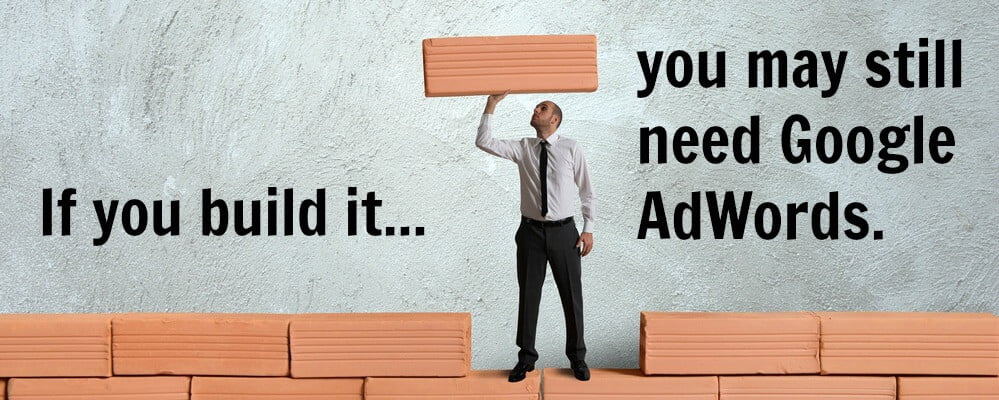
Email newsletters are a powerful tool for content amplification as well as nurturing leads and driving traffic to your website.
Businesses often focus their marketing efforts on generating leads but then drop the ball when it’s time to help these prospects down the path to purchase. Carefully crafted email newsletters can improve brand awareness and engage your prospects to interact with your business.
Emailing your prospects is one of the most cost-effective digital marketing platforms we have today. Done correctly, you can successfully amplify your content and enjoy a substantial ROI for your efforts.

This is one of the most commonly used content amplification techniques — and one of the most effective.
Sponsored Facebook posts, in particular, offer a highly affordable way to get your message in front of a select audience of qualified prospects. Structured correctly, a sponsored Facebook post can amplify your content exponentially through likes and shares.
The key to a strong ROI with sponsored posts is the precise alignment of message, target audience and engagement. Social media platforms are designed to inspire conversations and interactions. Your audience will know immediately if you’re trying to sell to them. Provide exceptional, engaging content, however, and you’ll trigger these invaluable interactions.

It may come as a surprise, but press releases can be a powerful addition to your digital marketing toolkit. You can use press releases for boosting your SEO and building brand awareness, as well as for content amplification.
This approach only works well when you have content that’s newsworthy, however, so craft your content carefully if you plan to use this approach for amplification. New product launches are ideal for this platform, as are seminars and other special events that your company may plan to host.

If it’s appropriate, you can target your press releases based on a specific geographic location. This helps reduce the cost and ensures that your message gets in front of the right audience.
We saved the best — and potentially most challenging — content amplification strategy for last.
An influencer is any individual, company, publication, etc., that your prospects pay attention to. On a global scale, companies may pay celebrities (or provide them with free merchandise) to use their products in public or post on social media about it. This influences the celebrity’s followers to try the product themselves.

On a more practical level, an effective influencer for your business could be a thought leader in your industry or anyone who has established a community of followers that you’d like to reach. In this case, you don’t want to pay the influencer, but you want to earn their attention and endorsement.
For instance, if you own a plant nursery or garden center, you could try reaching out to a locally or regionally known gardening guru — maybe someone who has a TV or radio show or who does appearances at local home and garden shows. Or if you are a home remodeling contractor, look for someone who writes a home renovation column for your local newspaper.
Create content that would specifically appeal to the influencer’s audience and then drop them an email with a brief introduction and a link to your content. It’s important to note that you’re not trying to advertise your business to influencers — or get them to advertise for you. But if what you have to share is truly beneficial in some way to their community, they will definitely amplify your content.
Would you like to learn new ways to get your digital content out to a wider audience? Be Locally SEO helps businesses achieve their growth and marketing goals through digital marketing. Our unique approach to SEO, web design, content creation and PPC campaigns ensures that your message is reaching the right audience. Contact us today to learn more about incorporating content amplification strategies into your digital marketing.
Using animation as a part of your web design can draw more potential customers in and help improve the user experience for your site visitors.
If you aren’t familiar with all the ways that animation can improve your website design, you’re in for a surprise. Animation isn’t just for Saturday morning cartoons. It can provide an impressive boost to your SEO while making your website more approachable and modern.
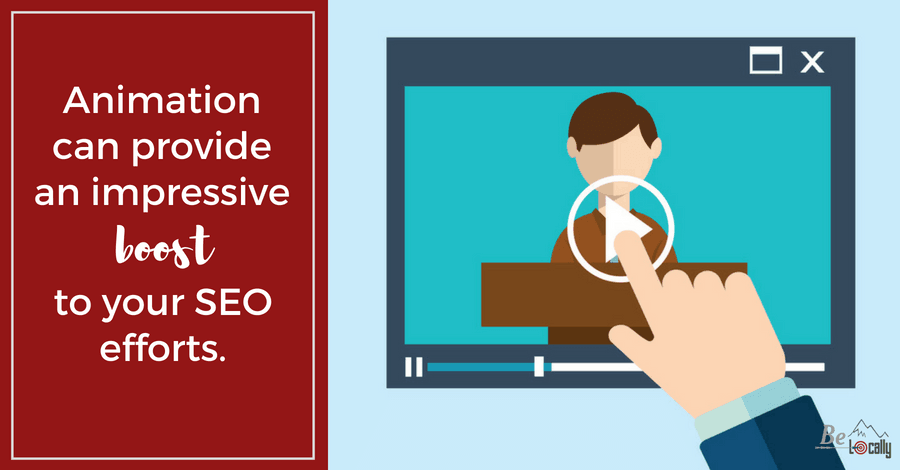
We know from decades of psychological research that movement attracts attention and enhances perception. This ties back to the earliest days of humanity, when survival depended on detecting and paying attention to movement — because it potentially meant the possibility of a nutritious meal (having one or being one).
Even today, our brains compel us to pay attention to movement. And animation is the only way to introduce this powerful element to your website.

Adding animation as a part of your web design will grab your visitors’ attention. But it can provide many other benefits too. You can use this powerful design element for small animations or large-scale effects that underlie segments of your site.
With today’s technology, animations load quickly and use far fewer resources than video, with none of the headaches that come with the old-school Adobe Flash platform.
When we hear the word animation, it may conjure images of Scooby Doo and SpongeBob. But, today, this term encompasses everything from text moving on the screen to long-form how-to videos.

You can incorporate animation into the website design itself, but you can also use animation elements to demonstrate a specific feature or your products or services. You can use it for hover effects, for radio buttons and switches, and as a fun and creative alternative to basic website menu functions.

You can also add a slideshow to your web design or animate your website homepage. You can take a minimalist approach, or go all out with your homepage animation.
However you choose to use animation, make sure it guides your site visitors, adds value or tells a story. Animating aspects of your website simply for the sake of animating will not resonate with your prospects. Use this tool to build excitement and share information that your site’s visitors will find irresistible.
The key to using animation successfully in your web design is incorporating it as part of your overall web design and digital marketing strategy.
Knowing when to use animation — and when not to — can make all the difference between an effective tool for business growth and a flashy, expensive gimmick.
If your website design is static and staid, a little animation will bring life to the user experience. However, if your site is already “busy,” adding animation might serve only to confuse your visitors. Confusion leads to discomfort, and before you blink, your prospects will have moved on to your competitors.

Be Locally SEO can evaluate your website and determine whether animation could benefit you by extending the time visitors spend on your site, and most important, increasing your conversions. Our experienced team works with businesses in our home state of Utah; however, we provide professional representation to a variety of clients, both large and small.
Contact us today to learn how your business can benefit from some of the most effective web design trends today.
